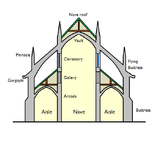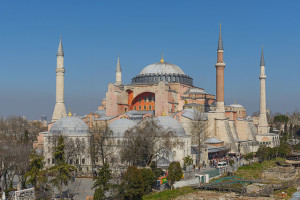BASILICA
The term basilica (term is greek derived) refers to a large an important church that has been given special ceremonial rights by the Pope. Roman Catholic basilicas are Catholic pilgrimage sites, meaning they receive tens of millions of visitors per year. Below is a picture of St Peters Basilica in Vatican City. It is a major basilica of the Roman Catholic Church.
Initially basilicas were used for business and had no religious function at all in Roman times. The oldest known basilicas date back to 184 BC in Rome.
Architecture plays a large part in what makes up a basilica. Christians adopted a variation of the basilica for worship. It usually consisted of a central nave (hallway) with an aisle on each side. An altar on a platform was placed at the front of the hall for the clergy to officiate services. In most basilicas, the central nave is taller than the aisles, forming a row of windows called a clerestory. Below is a basic drawing that shows the structural elements of a gothic basilica.
The reason this term is important to our topic is because Hagia Sophia is a former Christian Patriarchal Basilica (church) that is located in Istanbul, Turkey. Is was the largest cathedral until the early 1500’s. It was built in 537 and is labeled famously as having Byzantine Architecture because it was built during the reign of Constantinople during the Roman Empire. It is well know for its massive dome.
Timeline:
537-1453: Orthodox Cathedral
1453-1931: Mosque
1935-present day: Museum
Below is a picture of Hagia Sophia.
References:
https://en.wikipedia.org/wiki/Basilica
https://en.wikipedia.org/wiki/Hagia_Sophia


